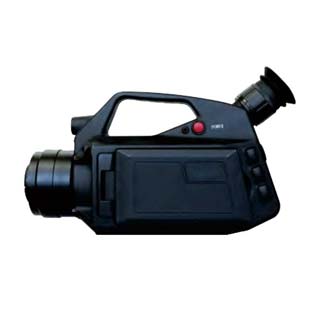In today's fast-paced world of technological advancements, innovations in the field of imaging are making significant strides. Among these breakthroughs, chemical imaging cameras have emerged as a remarkable tool, offering a unique perspective that goes beyond traditional photography and standard spectroscopy. These powerful devices have applications spanning various industries, from pharmaceuticals and manufacturing to food safety and art restoration. In this blog, we will explore the captivating realm of chemical imaging cameras and unveil their incredible power.
Understanding Chemical Imaging
To comprehend the power of chemical imaging cameras, it's essential to first understand the concept of chemical imaging itself. Unlike conventional cameras that capture visual information, chemical imaging camera go a step further by providing insight into the composition and properties of objects or substances. They achieve this by combining the capabilities of spectroscopy and imaging.
Applications Across Industries
Pharmaceuticals
In drug development and quality control, chemical imaging cameras play a pivotal role. They help researchers analyze the distribution of active pharmaceutical ingredients within tablets or capsules, ensuring product consistency and efficacy.
Manufacturing
In manufacturing processes, these cameras aid in quality control by identifying defects, contaminants, or inconsistencies in products. This ensures that only high-quality goods reach consumers.
Food Safety
Food and beverage industries utilize chemical imaging cameras to inspect for foreign materials, allergens, or microbial contamination. This technology enhances the safety and quality of the products we consume.
Medical Diagnosis
Medical professionals employ chemical imaging for disease detection and diagnosis. By examining tissue samples, these cameras can help identify abnormalities and aid in early disease detection.
The Advantages of Chemical Imaging Cameras
Non-Destructive
Unlike traditional chemical analysis methods that may require sample destruction, chemical imaging cameras provide non-invasive, non-destructive analysis.
High Precision
They offer high spatial and spectral resolution, allowing for detailed and accurate chemical mapping.
Rapid Analysis
Chemical imaging cameras can provide real-time or near-real-time results, making them valuable in time-sensitive applications.
Multimodal Imaging
Some advanced systems combine various imaging techniques, such as infrared and Raman spectroscopy, providing a more comprehensive view of a sample.
Future Prospects
The power of chemical imaging cameras and optical gas imaging cameras is poised for even greater expansion in the coming years. As technology continues to advance, we can expect improvements in speed, sensitivity, and portability. This will open doors to new applications and allow for broader adoption across industries.
In conclusion, chemical imaging cameras represent a transformative leap in our ability to visualize and understand the world around us. Their capacity to reveal the hidden chemistry of substances and objects has already had a profound impact on various fields. As we continue to unlock their full potential, these cameras are set to revolutionize industries, promote innovation, and deepen our understanding of the complex chemical world. The future indeed looks bright for this remarkable technology.


